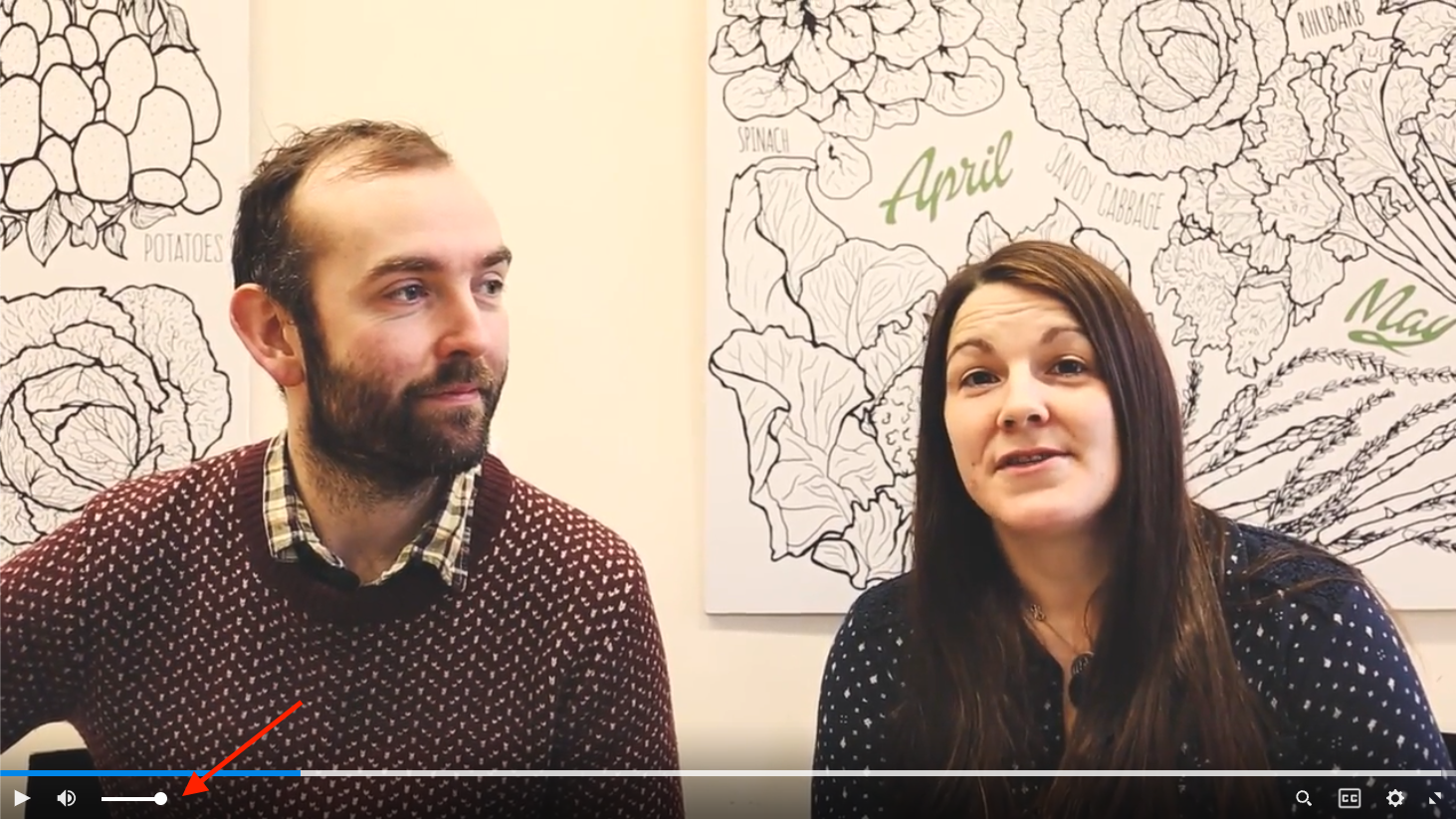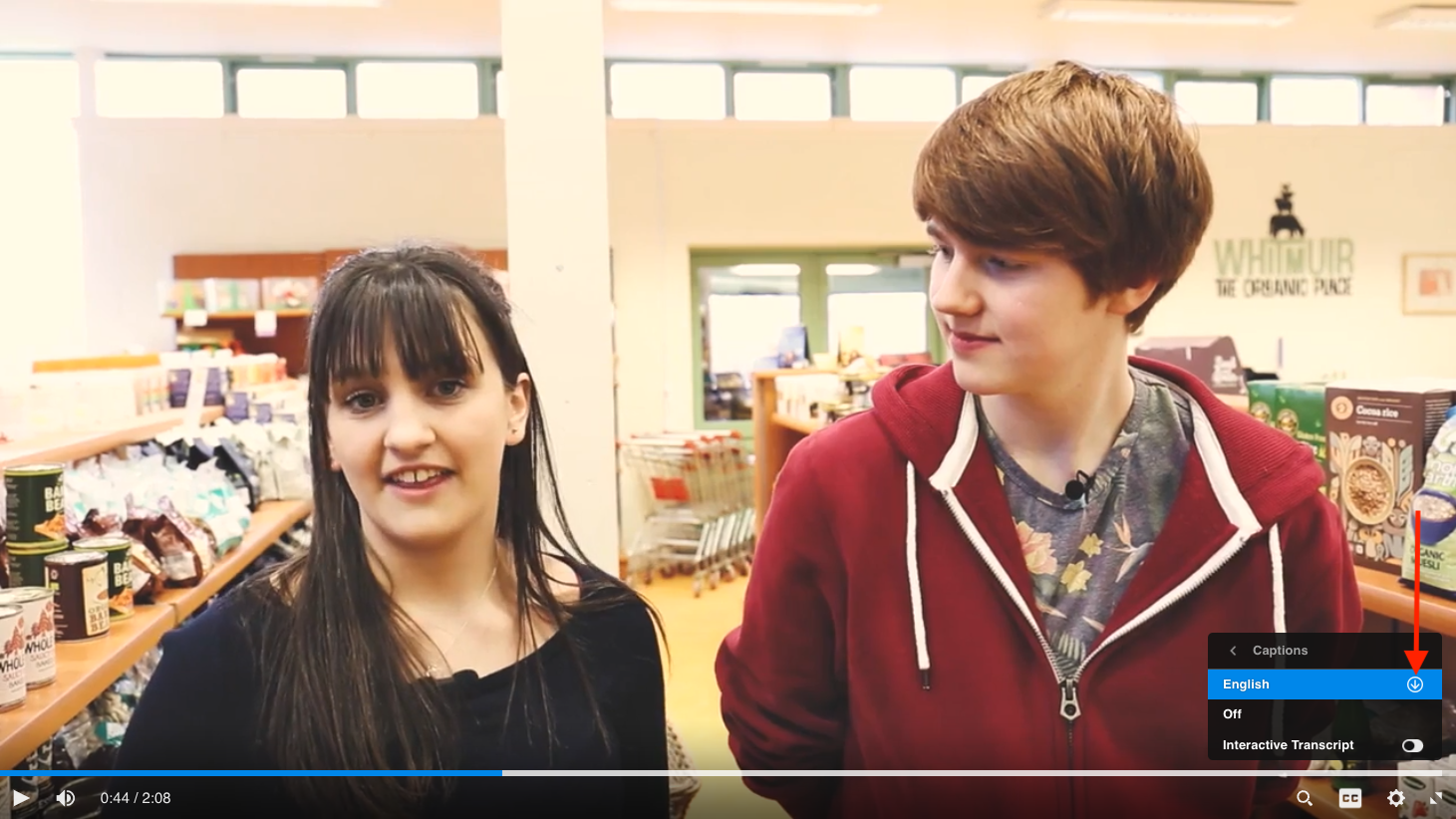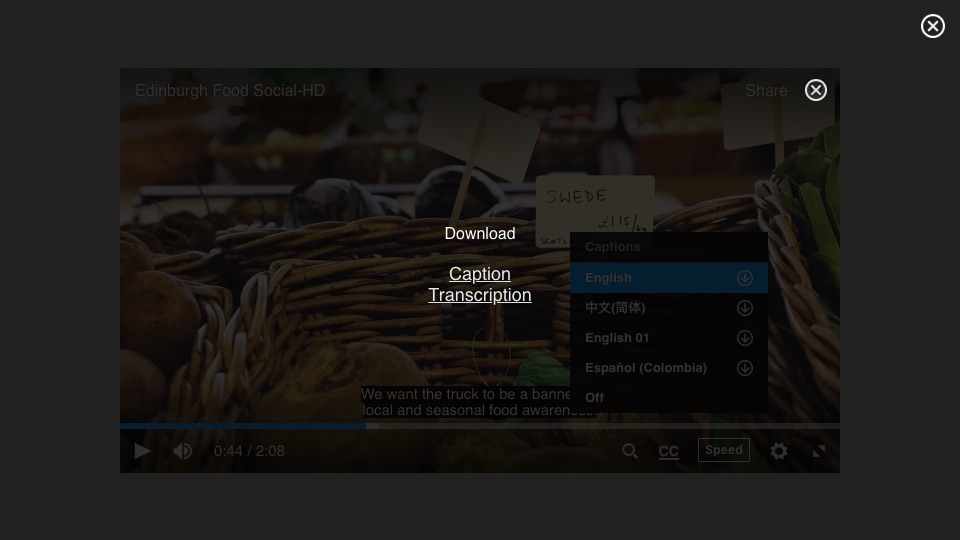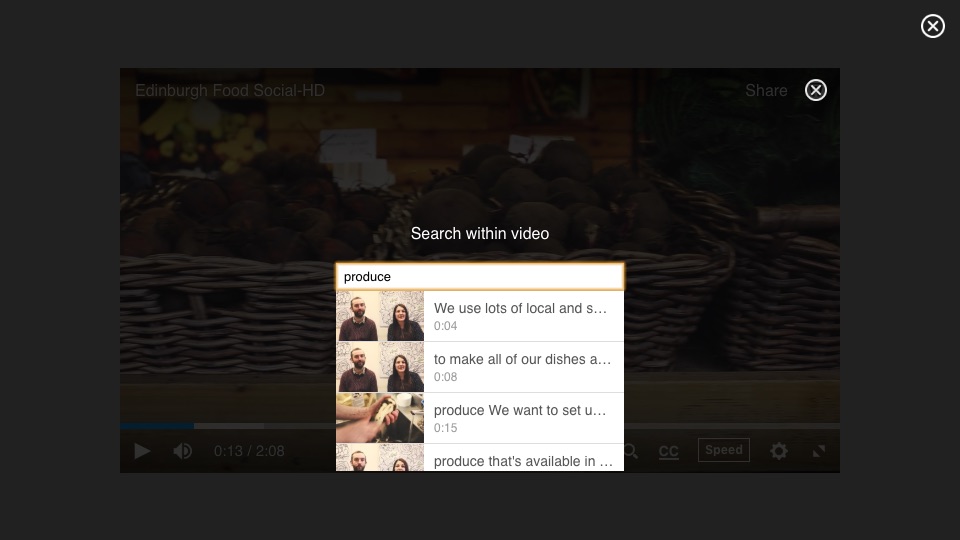The progress bar shows where you are in playback. You can click anywhere on the bar to navigate to that point in the video or audio. For assets longer than 10 seconds, a thumbnail will appear, giving you a clearer picture of where you're navigating to. This makes "fast forwarding" and "rewinding" simple.
On a personal computer, if you hover over a playing video or audio asset, a progress bar will appear at the bottom. This is where you can navigate within the video or audio and change playback settings.

To the left of the progress bar is the volume slider. You can drag it up and down to adjust volume, or use your keyboard or mobile device volume buttons.

If there are closed captions attached to the video or audio asset, you'll find them by first clicking the gear cog Settings icon, then selecting Captions.

From here, click the download icon next to the listed language you prefer. You'll be able to select the caption file you want to display.

If you click the small arrow next to a given caption file, you'll have the option of downloading the caption file or the transcript to your device.

To the left of the CC button is the caption search button, a magnifying glass icon. Click it to search the caption file.

Your results will be displayed, showing a thumbnail and the caption line. Click to navigate to that part of the video or audio asset.

To adjust the playback speed, first click the gear button, then click Speed from the menu. From there, you may select from .25x, .5x, .75x, 1x, 1.25x, 1.5x, 2x speeds.

The gear button on the right of the progress bar also allows you to choose playback quality that best matches your available bandwidth. By default, the quality is set to "Auto" and will adjust automatically based on available bandwidth.

Next to the quality levels, if downloading is allowed, you'll see a downward pointing arrow. Click the arrow to download the asset directly to your device.

Finally, on the far right of the progress bar, is the "Fullscreen" button (a diagonal arrow). Clicking this button will expand playback to the full width of your screen, obscuring other windows and applications. Hit the escape key, or click on the "Fullscreen" button again to leave fullscreen mode.

See also: Video Player Keyboard Shortcuts, Audio and Video Player Keyboard Shortcuts.
Was this article helpful?
That’s Great!
Thank you for your feedback
Sorry! We couldn't be helpful
Thank you for your feedback
Feedback sent
We appreciate your effort and will try to fix the article